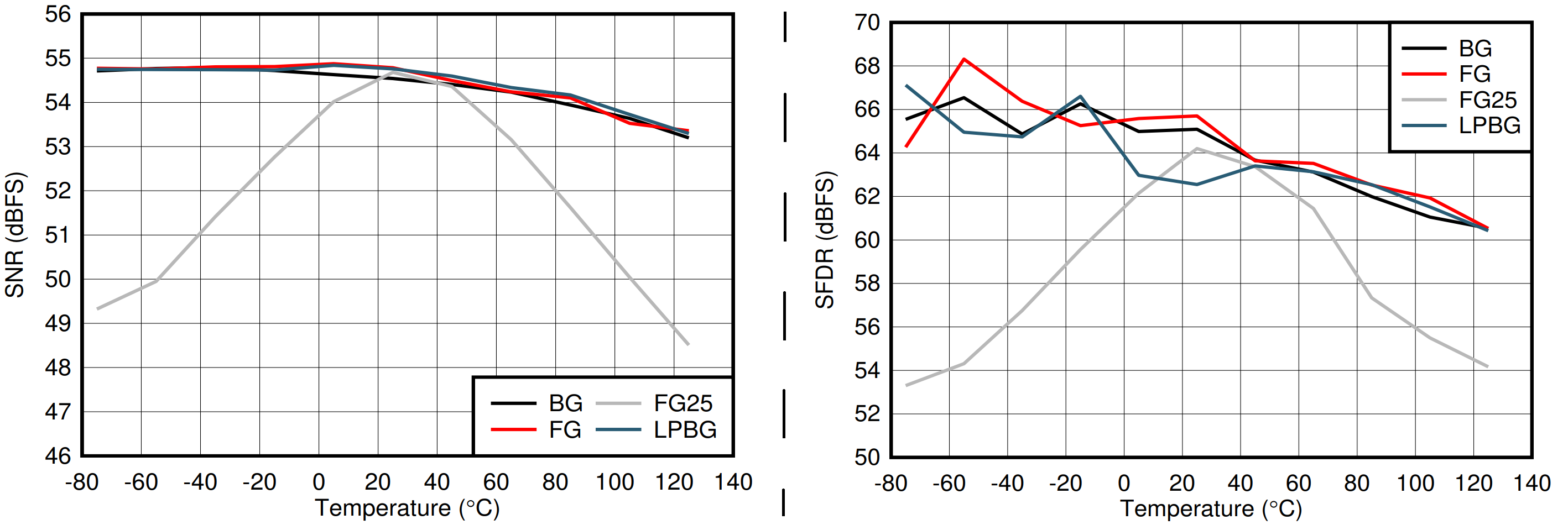SBAA590 june 2023 ADC12DJ5200RF , ADC32RF52 , ADC32RF54 , ADC32RF55 , ADC34RF52 , ADC34RF55
2.1 Temperature Variations
Temperature variations can affect the internal circuitry of the ADC reducing its performance, necessitating a re-calibration to maintain accuracy. Figure 2-1 below compares the signal-to-noise ratio (SNR) and SFDR versus temperature in different calibration modes. The FG25 trace acts as a baseline and represents performance if the ADC12DJ5200RF is calibrated only at 25 °C. All other traces are calibrated at each recorded temperature proving various calibration methods as effective.
Additionally, these changes in ambient and or board temperature can alter the electrical characteristics of front-end components, resulting in an unexpected ADC input impedance and likely degradation of second or third-order harmonics (HD2 and HD3).
 Figure 2-1 ADC12DJ5200RF Performance
Versus Temperature in Different Calibration Modes
Figure 2-1 ADC12DJ5200RF Performance
Versus Temperature in Different Calibration Modes